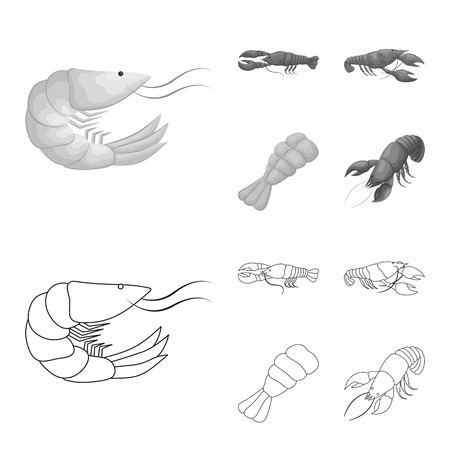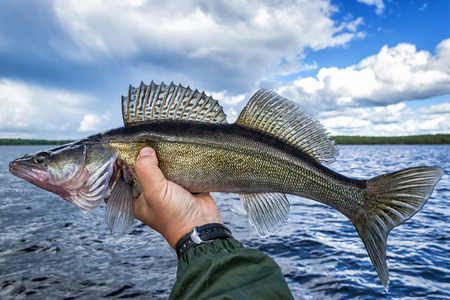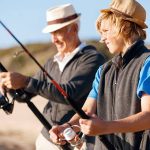Introduction to Fly Fishing
If you’ve ever stood by a sparkling river and watched someone casting a line in graceful loops, you’ve probably wondered what it feels like to try fly fishing. Whether you’re planning a weekend adventure with your kids or looking for a peaceful solo escape, fly fishing is a fantastic way to connect with nature, learn new skills, and make unforgettable memories.
Fly fishing isn’t just about catching fish—it’s about the experience. Imagine wading into cool water, feeling the rush of the current, and focusing on the rhythmic motion of your cast. It’s relaxing, exciting, and full of surprises. Plus, it’s something everyone in the family can enjoy together, from curious beginners to seasoned anglers.
Why Try Fly Fishing?
- Outdoor Fun: Spend quality time outside, breathing fresh air and soaking up sunshine.
- Family Bonding: Share laughs and teamwork as you learn together.
- Lifelong Skills: Master techniques that build patience, focus, and confidence.
- Adventure Anywhere: Fly fishing spots are everywhere—from local ponds to national parks.
What Makes Fly Fishing Special?
Unlike traditional fishing where bait does most of the work, fly fishing is all about skillful casting and choosing the right “fly” (a lightweight lure that looks like an insect). You’ll find yourself learning how fish think, noticing tiny details in nature, and celebrating every catch—big or small!
Is Fly Fishing Right for You?
| Great For | Why Its Awesome |
|---|---|
| Families | Create fun traditions and unplug together outdoors |
| Solo Adventurers | Find peace, focus, and personal challenge |
| Kiddos & Teens | Learn responsibility and respect for nature |
| Retirees & New Hobbies Seekers | A gentle activity that keeps you moving and engaged |
No matter who you are or where you live in the U.S., fly fishing opens up a world of adventure right at your fingertips. Ready to dip your toes in? Let’s explore the essential gear every new angler needs to start their journey!
2. The Essential Fly Rod and Reel
If you’re just starting your fly fishing journey, picking the right rod and reel is a big first step! Think of it like choosing your trusty sidekick—it needs to fit your style, your local waters, and help you build confidence out there. Let’s break down what to look for when you head to your local outdoor store or browse online, plus a few tips straight from experienced anglers.
What Makes a Good Beginner Fly Rod?
For most beginners in the U.S., a 9-foot, 5-weight rod is like the “all-American” choice. It’s versatile enough for small streams and larger rivers, making it perfect for chasing trout and other common freshwater fish. Here’s a quick guide:
| Rod Length | Rod Weight | Best For |
|---|---|---|
| 8-9 feet | 4-6 weight | General trout fishing, ponds, lakes, rivers |
| 7-8 feet | 2-4 weight | Small creeks, tight spots, panfish |
| 9+ feet | 6-8 weight | Bass, bigger rivers, light saltwater |
If you’re shopping at an outdoors store like Bass Pro Shops or Cabela’s, don’t be shy—ask one of the staff members for advice. Many are anglers themselves and love sharing what works best in your area!
The Right Reel: What Should You Look For?
Your fly reel doesn’t have to be fancy (especially when starting out), but it should be reliable and match your rod’s weight. Look for these features:
- Size Match: Make sure the reel is designed for the same weight line as your rod (for example, both should say 5-weight if that’s what you choose).
- Smooth Drag: The drag system helps control the fish when it pulls—smoothness matters more than stopping power for beginners.
- Simplicity: A basic click-and-pawl or disc drag system is easy to use and maintain.
Handy Tips from Seasoned Anglers
- If you’re not sure which combo to get, many brands offer starter kits with rod, reel, line, and even a few flies—all matched up and ready to go!
- Try holding different rods in-store before buying. Comfort matters—you’ll spend hours casting!
- If you plan on fishing mostly local lakes or rivers, ask locals what they use; sometimes regional favorites make all the difference.
- You don’t need to break the bank: great beginner combos can often be found under $150.
The Takeaway for New Anglers
The “right” fly rod and reel are the ones that feel good in your hands and suit your favorite fishing spots. With these basics in mind—and maybe a little help from your friendly neighborhood angler—you’ll be ready to hit the water with confidence!

3. All About Fly Lines and Leaders
When you’re getting started with fly fishing in the U.S., you’ll quickly hear people talk about fly lines, leaders, and tippets. It can sound confusing at first, but don’t worry! Let’s break down what each part does and why it matters for your success on the water—whether you’re fishing a mountain stream or a neighborhood pond.
What Are Fly Lines?
The fly line is the thick, colorful line that helps you cast your lightweight fly out onto the water. Unlike regular fishing line, fly line is designed to be heavy enough so you can actually throw (or “cast”) the almost weightless fly. In American fly fishing culture, choosing the right fly line is a big deal because it makes casting fun and helps you fish more effectively.
Types of Fly Lines
| Type | Best For | Description |
|---|---|---|
| Floating Line | Bass, trout, panfish | Stays on top of the water; most common for beginners |
| Sinking Line | Larger rivers, lakes | Sinks below the surface to reach deeper fish |
| Sink-Tip Line | Streams with depth changes | The tip sinks while the rest floats—good for varied conditions |
What Is a Leader?
The leader is a clear, tapered piece of monofilament or fluorocarbon that connects your thick fly line to the tiny fly. Its main job is to let your fly land gently and naturally on the water—so those smart American trout or bass don’t get spooked!
Why Tapered Leaders Matter
Tapered leaders start thick at one end (to connect to your fly line) and get thinner at the other end (where you tie your fly). This design helps transfer energy from your cast smoothly all the way to your fly. Most new anglers in America use pre-made tapered leaders, which are easy to find at any outdoor store.
What Is a Tippet?
The tippet is simply the very end of your leader—the thinnest section where you tie on your actual fly. As you change flies throughout a day of fishing (which happens a lot!), your leader gets shorter. You add new tippet material to keep your leader long and strong without having to replace the whole thing.
How They All Work Together
| Part | Main Purpose | How It Helps You Fish |
|---|---|---|
| Fly Line | Casting power & distance | Makes it possible to cast light flies far and accurately |
| Leader | Smooth energy transfer & stealthy presentation | Lets your fly land softly so fish aren’t scared away |
| Tippet | Delicate connection & easy replacement | Keeps your setup fresh as you switch flies during your adventure |
A Quick Parent-Child Tip:
If you’re learning together as a family, practice tying leaders and tippets at home first. It turns into a fun little challenge—who can tie the best knot? And when you’re on the river, everyone will feel ready to tackle their own gear like true anglers!
4. Must-Have Flies and Storage Tips
When you’re just starting your fly fishing journey, walking into a fly shop can feel a bit overwhelming—so many colorful flies and little boxes! But don’t worry, you only need a handful of tried-and-true patterns to get started. Let’s break down some of the most popular flies in the U.S. and share some super simple ways to keep them organized for every fishing trip.
Popular Fly Patterns for Beginners
Each fly is designed to “match the hatch”—meaning, they imitate the bugs fish love to eat. Here are a few essentials that work almost anywhere in America:
| Fly Name | Type | Best For | Quick Tip |
|---|---|---|---|
| Woolly Bugger | Streamer | Trout, bass, panfish | Great for moving water or lakes; very versatile |
| Parachute Adams | Dry Fly | Trout (especially in rivers) | Floats well and imitates many mayflies |
| Pheasant Tail Nymph | Nymph | Trout in streams and rivers | Mimics a wide range of aquatic insects underwater |
| Elk Hair Caddis | Dry Fly | Trout, especially in fast water | Tough and floats high—even for beginners! |
| Clouser Minnow | Streamer/Baitfish Imitation | Bass, saltwater species, even trout | Casts well and sinks quickly; good all-rounder |
| SAN JUAN WORM | Nymph/Worm Imitation | Trout (great after rain or runoff) | Simple and surprisingly effective everywhere |
Easy Fly Storage Ideas for Families & New Anglers
If you fish with your kids or friends, keeping flies organized can help everyone find what they need without fuss. Here are some practical tips:
1. Start With a Simple Fly Box
A basic plastic or foam fly box with compartments is perfect for beginners—no need to splurge on fancy gear right away. Label each section by type (dry, nymph, streamer) so you can grab what you need fast.
2. Color Code Your Flies
Add small colored stickers inside your box or use different color boxes for each kind of fly. This makes it easy for kids to help pick out the right fly when you’re by the water.
3. Go Portable with Patch or Magnetic Boxes
If you want to travel light, try a magnetic fly patch or a mini pocket-sized box. These stick right onto your vest or pack—perfect for spontaneous fishing stops!
Parent-to-Parent Tip:
If your child loves sorting things (think Legos!), let them help organize your flies at home as part of your pre-trip ritual. It’s a fun way to build excitement—and teach responsibility.
No matter how many flies you have, keeping them tidy means less time digging through gear and more time casting lines together. Next time you head out, you’ll be ready to match the hatch and make some great memories on the water!
5. Apparel and Accessories for Comfort
When you’re out fly fishing, staying comfortable and protected is just as important as having the right rod or reel. American anglers know that the right apparel and accessories can make a big difference in your experience—whether you’re wading in a cool mountain stream or casting from a sunny riverbank. Here’s a simple guide to the essentials that will keep you feeling great while you fish.
Waders: Keeping Dry and Warm
Waders are a must-have for many fly fishers, especially if you want to get into deeper water without getting soaked. Most beginners start with chest waders for full coverage, but hip waders are also popular in shallow streams. Look for breathable materials, like Gore-Tex or nylon, so you don’t overheat on warm days.
Types of Waders
| Type | Best For | Key Features |
|---|---|---|
| Chest Waders | Deeper waters, colder weather | Full coverage, adjustable straps |
| Hip Waders | Shallow streams, warmer days | Lighter weight, easy to put on/take off |
| Waist-High Waders | Medium depth, versatile use | Covers up to waist, more mobility |
Boots: Traction and Support Where You Need It
A good pair of wading boots goes hand-in-hand with your waders. They protect your feet from sharp rocks and slippery surfaces. Many American anglers prefer boots with felt soles for extra grip or rubber soles when fishing in areas where felt is restricted for environmental reasons.
Sun Protection: Stay Safe Under the Sun
The sun can be surprisingly strong out on the water! Wearing a wide-brimmed hat, polarized sunglasses, and a long-sleeve UPF shirt helps shield you from UV rays and cuts down on glare so you can spot fish more easily. Don’t forget sunscreen for any exposed skin.
Vests and Packs: Keep Your Gear Handy
A classic fly fishing vest has lots of pockets for flies, leaders, tippet, clippers, snacks—you name it! Some anglers now go for sling packs or chest packs, which can be easier on your back. The main goal is to keep everything organized and within arm’s reach.
Quick Checklist of Apparel & Accessories
| Item | Why You Need It |
|---|---|
| Waders & Boots | Stay dry and safe when walking in water |
| Hat & Sunglasses | Protect eyes and skin from sun glare/UV rays |
| Sunscreen & UPF Clothing | Shield skin from sunburn and harmful rays |
| Vest or Pack | Easily carry and organize all your small gear |
| Light Rain Jacket (optional) | Stay dry during unexpected showers |
The right clothing and accessories help ensure every trip to the river is safe, comfortable, and fun—for both new anglers and families learning together!
6. Bonus Tools You’ll Love
When you’re just getting started with fly fishing, it’s easy to focus on the basics like rods, reels, and flies. But there are a few extra tools—think of them as little helpers—that can make your time on the water even more fun and a lot easier. These bonus tools aren’t just for adults; they’re also great for getting kids excited about learning the details of fly fishing. Let’s take a look at some favorites:
Nippers: The Tiny Tool That Saves the Day
Nippers are basically small clippers that help you trim fishing line or tippet right where you need to. They’re simple to use and fit easily in your pocket or hang from your vest. If you’ve ever tried to bite fishing line or fumbled with scissors, you’ll see why nippers are a must-have.
Why Kids Love Them
Letting your child snip their own line is a small but exciting job. It helps them feel involved and teaches responsibility for their own gear. Plus, using nippers is much safer than trying to use adult-sized scissors!
Forceps: Handy Helpers for Hook Removal
Forceps look like little pliers and are used to take hooks out of fish safely—or untangle knots in a hurry. They’re especially helpful if you’re practicing catch-and-release, making it easier to get the hook out without hurting the fish (or your fingers).
A Learning Moment for Kids
Using forceps is a great way for kids to learn about fish care and respect for nature. Show them how gentle handling keeps both them and the fish safe—it’s all part of being a responsible angler.
Other Handy Extras
| Tool | What It Does | Kid-Friendly Tip |
|---|---|---|
| Zinger (Gear Retractor) | Keeps nippers or forceps attached so they don’t get lost | Kids love the “zip” action—attach their favorite tool! |
| Fly Box | Keeps flies organized and ready to go | Let kids pick their own box and decorate it with stickers |
| Lanyard or Vest | Makes carrying tools easy and hands-free | Treat it like a treasure hunt—what tool will they use next? |
Making Memories Together
Packing these bonus tools isn’t just about making fishing easier—it’s about building confidence, independence, and curiosity in young anglers. When you hand over those nippers or help them use forceps for the first time, you’re sharing more than just gear; you’re passing along tiny traditions that make every trip special.
7. Getting Ready for Your First Trip
So, you’ve gathered your fly fishing gear and can’t wait to hit the water! Getting ready for your first trip is all about a little planning and a lot of excitement. Here’s how to make sure you’re set up for a memorable (and maybe even magical) day outside.
Practical Tips for Packing Your Gear
Before you go, double-check your gear bag. Trust me—nothing spoils the fun faster than realizing you left your favorite flies at home! Here’s a handy checklist to help keep things simple:
| Essential Gear | Check Before You Go |
|---|---|
| Rod & Reel | Make sure everything is assembled and working smoothly |
| Fly Line & Backing | Is it spooled correctly? No tangles? |
| Leaders & Tippet | Packed and easy to access? |
| Flies | Bring a variety—dry, nymphs, streamers |
| Waders & Boots (if needed) | No leaks? Good fit? |
| Sunscreen & Bug Spray | You’ll thank yourself later! |
| Polarized Sunglasses & Hat | For eye protection and better visibility in the water |
| Net & Pliers/Forceps | For landing and releasing fish safely |
| Water Bottle & Snacks | Stay hydrated and energized! |
| Packing List or Checklist | A quick look before heading out can save headaches later on |
Check Local Regulations Before You Go
This part might not sound thrilling, but it’s super important: always check local fishing regulations. Every state—and often each river or lake—has its own rules about licenses, catch limits, fishing seasons, and which flies are allowed. In the U.S., you can usually find info on the state’s fish and wildlife website. If you’re bringing kids, some states offer special youth fishing days or free fishing weekends, so be sure to look those up too!
Quick Steps:
- Get your fishing license: Most states let you buy them online.
- Read up on local rules: Check for special regulations like catch-and-release only sections.
- If in doubt—ask: Local tackle shops are great places to get tips and up-to-date info from experienced anglers.
Make Your First Fly Fishing Experience Magical
Create Lasting Memories with These Simple Ideas:
- Pace Yourself: Don’t rush—enjoy learning at your own speed. It’s totally normal if you don’t catch anything right away!
- Bring Family or Friends: Sharing the adventure makes everything more fun. Plus, someone else might remember that extra snack or sunscreen.
- Take Photos: Capture those “firsts”—your first cast, first fish (or first tangle!). They’ll be fun stories to share later.
- Tune into Nature: Take a moment to listen to the birds, feel the breeze, and appreciate being outdoors—it’s part of what makes fly fishing special in America’s beautiful wild spaces.
The best fly fishing trips aren’t always about how many fish you catch—they’re about soaking in the experience with loved ones, making discoveries together, and connecting with nature. So pack smart, check those local rules, and get ready for a day full of laughter and new memories!


